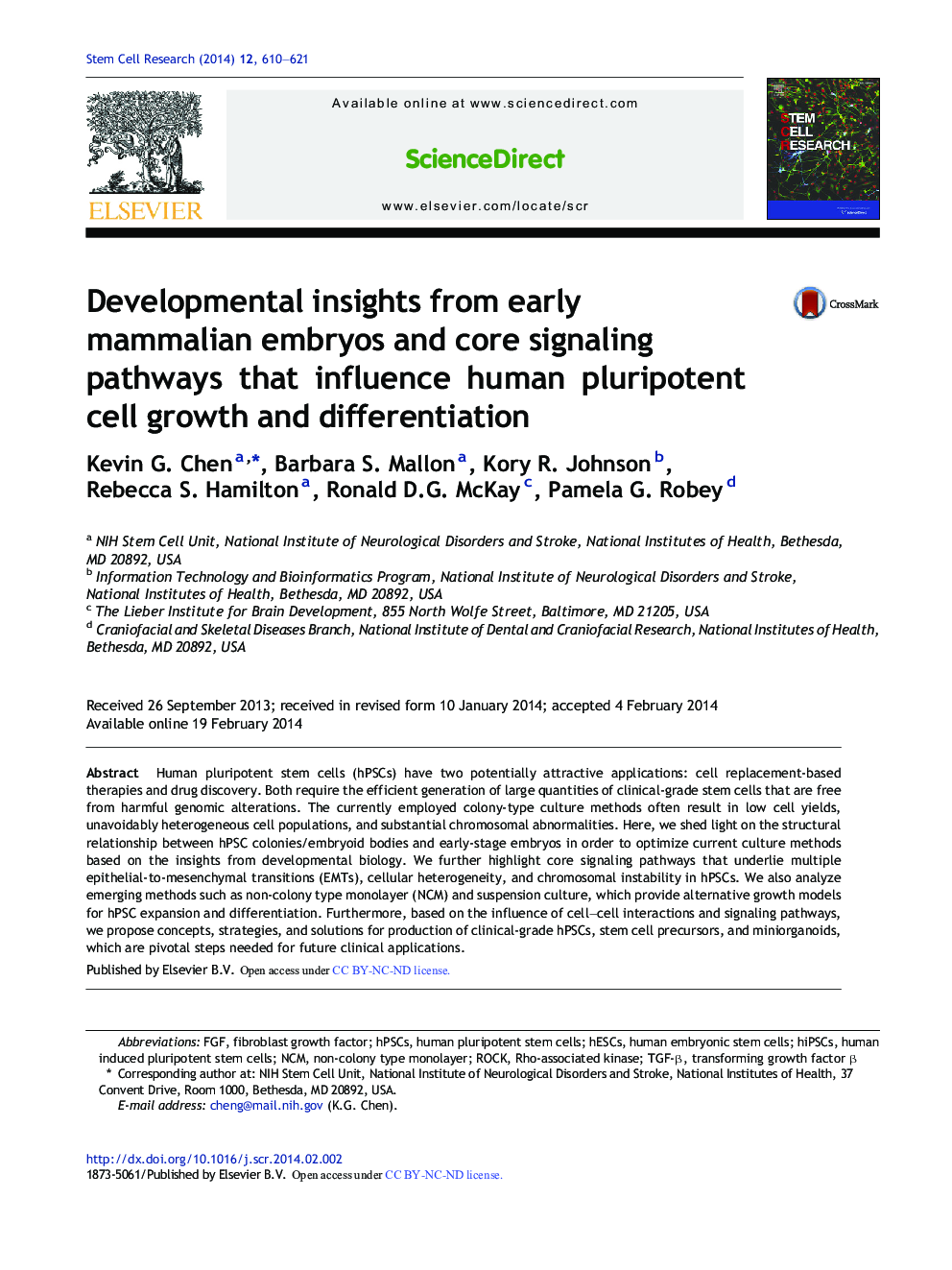| Article ID | Journal | Published Year | Pages | File Type |
|---|---|---|---|---|
| 2094526 | Stem Cell Research | 2014 | 12 Pages |
•Dissect cell–cell interactions of early embryos that influence hPSC growth•Provide new insights into the mechanisms of cellular heterogeneity•Analyze current growth models for hPSCs•Evaluate new culture methods for hPSC expansion•Propose strategies and solutions for production of clinical-grade hPSCs
Human pluripotent stem cells (hPSCs) have two potentially attractive applications: cell replacement-based therapies and drug discovery. Both require the efficient generation of large quantities of clinical-grade stem cells that are free from harmful genomic alterations. The currently employed colony-type culture methods often result in low cell yields, unavoidably heterogeneous cell populations, and substantial chromosomal abnormalities. Here, we shed light on the structural relationship between hPSC colonies/embryoid bodies and early-stage embryos in order to optimize current culture methods based on the insights from developmental biology. We further highlight core signaling pathways that underlie multiple epithelial-to-mesenchymal transitions (EMTs), cellular heterogeneity, and chromosomal instability in hPSCs. We also analyze emerging methods such as non-colony type monolayer (NCM) and suspension culture, which provide alternative growth models for hPSC expansion and differentiation. Furthermore, based on the influence of cell–cell interactions and signaling pathways, we propose concepts, strategies, and solutions for production of clinical-grade hPSCs, stem cell precursors, and miniorganoids, which are pivotal steps needed for future clinical applications.
